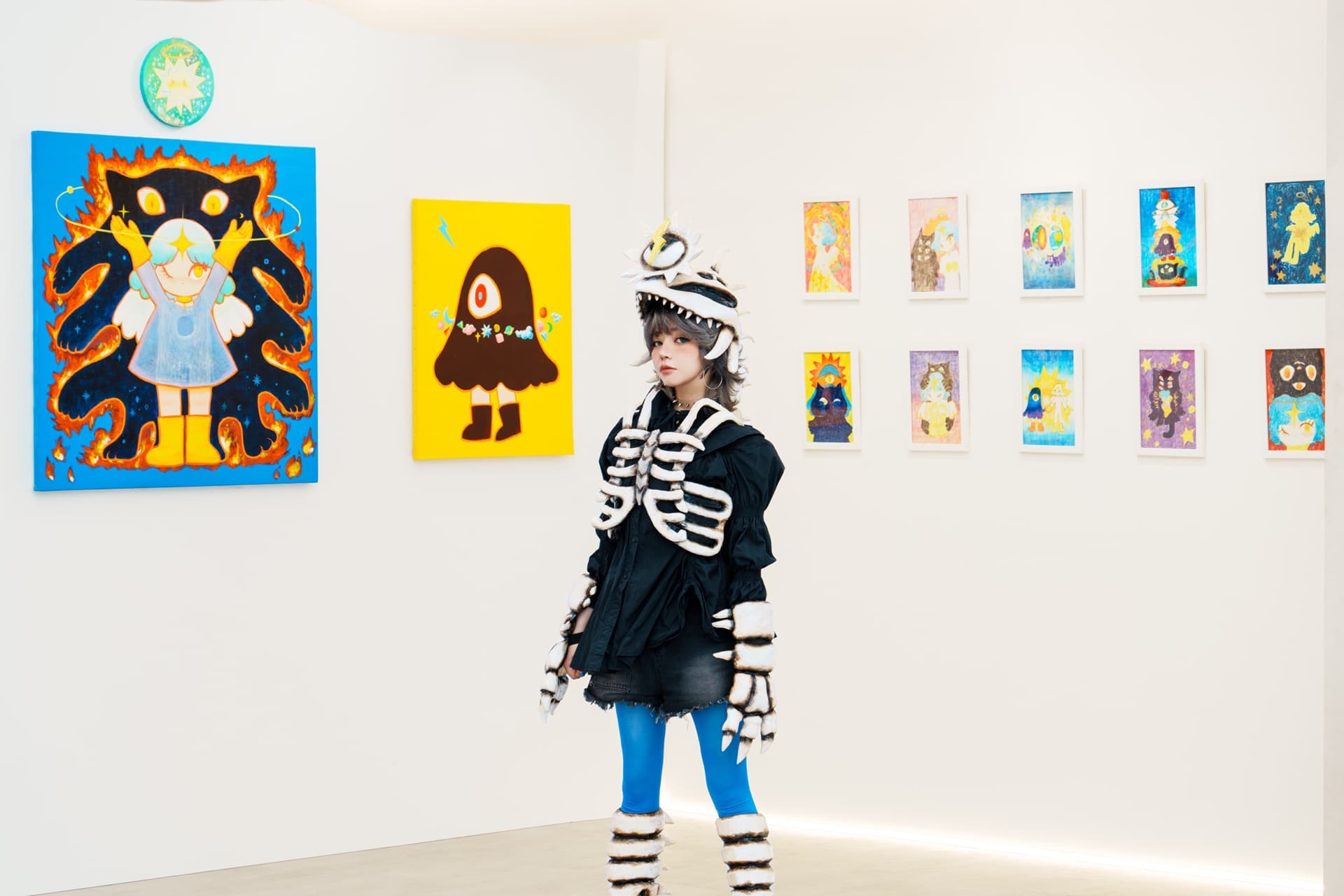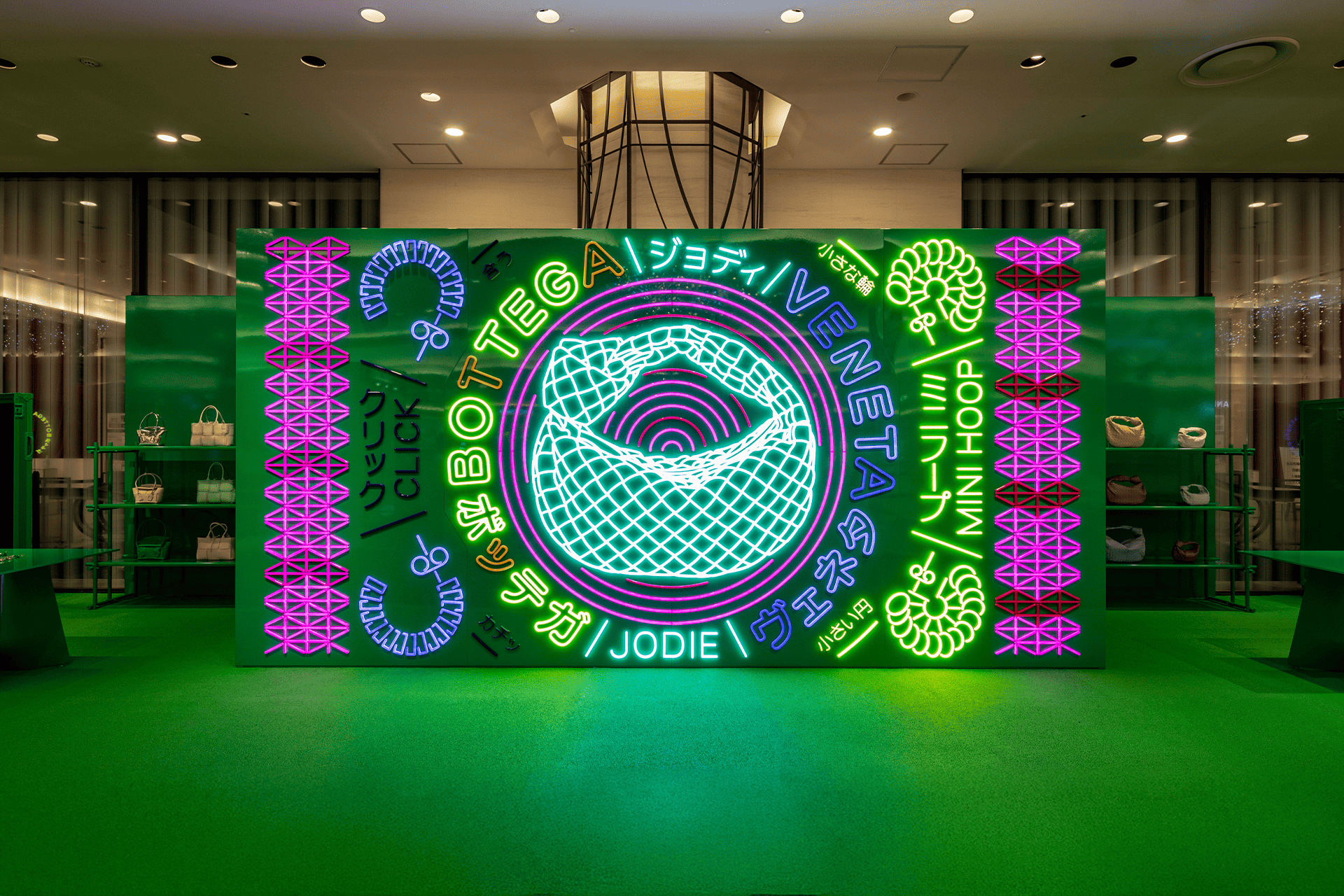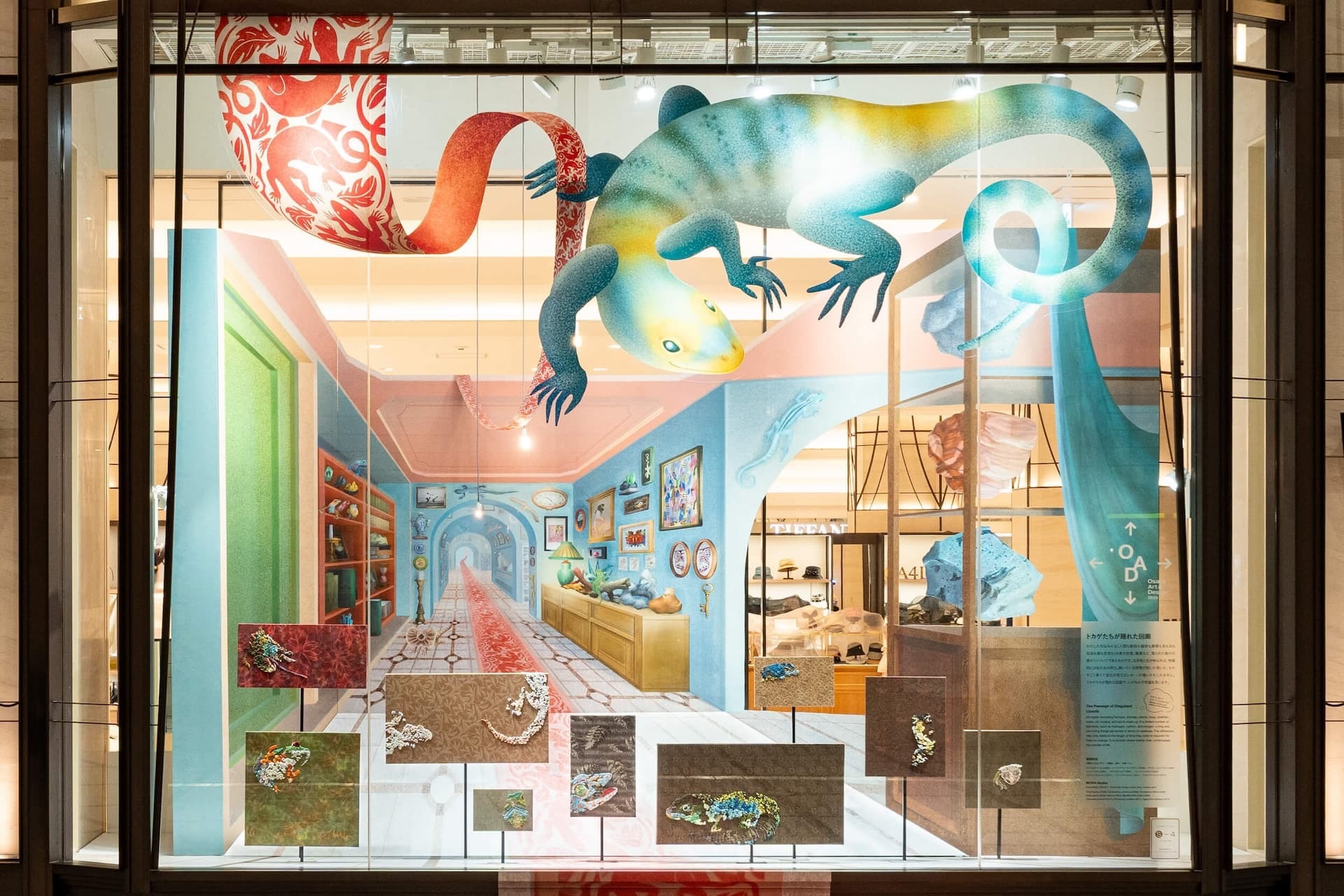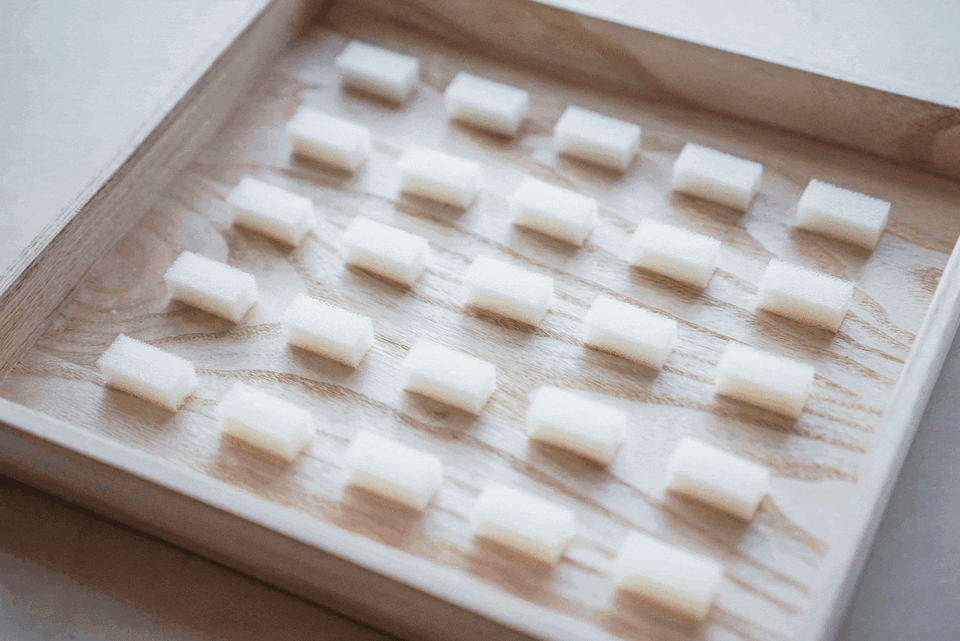The platform "AWRD," which connects creators and projects, presents a new series: "AWRD meets GLOBAL CREATORS" (#AMGC).
Focusing on the theme of "New Sensibilities," this series highlights emerging creators from around the world—designers, artists, and more—delving into their creative processes and the unique cultures of their respective countries.
For the seventh installment, we feature Saku Seidenba (English name: Diàn), an artist who excels as a pop artist, singer-songwriter, art director, and fashion designer.
Born in Beijing, China, and raised across the U.S., Europe, the Middle East, and Africa, Diàn is now based in Tokyo. With a multicultural perspective and a distinctive worldview, they continue to express themselves across music, art, and fashion. In this interview, we take a closer look at the creative process behind their work.
— You are active across multiple fields, including music, art, and modeling, rather than limiting yourself to a single genre. How do you differentiate and manage these various forms of expression?
All of my creative work is interconnected, expanding outward from the singular existence that is "me." Each field I engage in supports the others, and in many cases, I wouldn't be able to create without the combination of different skills.
When I take on a project, I fully immerse myself in that world, focusing on it as a professional in that field.
Because of this, when I shift between different disciplines, it sometimes feels as if I am splitting into multiple personas, or conversely, merging into one.
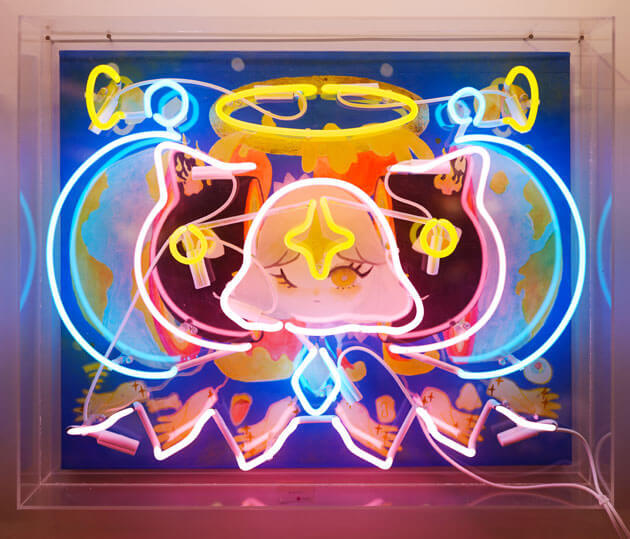
— You majored in animation at a university in China. How did that path lead you to your diverse creative outputs, including painting and music?
At university, I studied animation directing at an art academy, so drawing was a fundamental skill for me.
However, creating animation isn't just about drawing—it involves scriptwriting, storyboarding, directing, dialogue, and incorporating music and sound design to enrich the world of the work.
Since animation requires such a wide range of skills, I naturally found myself expanding beyond that field, gradually extending my creative expression into various disciplines as I do now.
— Many of your paintings feature charming characters that seem to reflect yourself. What kind of thoughts go into your creative process?
When I create, I don’t consciously try to project myself into my work. In fact, I feel a stronger desire to bring something completely different from myself into existence.
As I develop characters and imaginary friends, I encounter the concept of creating fictional beings that I can think and feel alongside—almost like an imaginary friend. It’s a way of giving form to the thoughts and emotions I sense within me.
These characters are both me and not me. I see myself as an antenna, receiving signals from them. My role is to capture those signals and use my skills to express them.
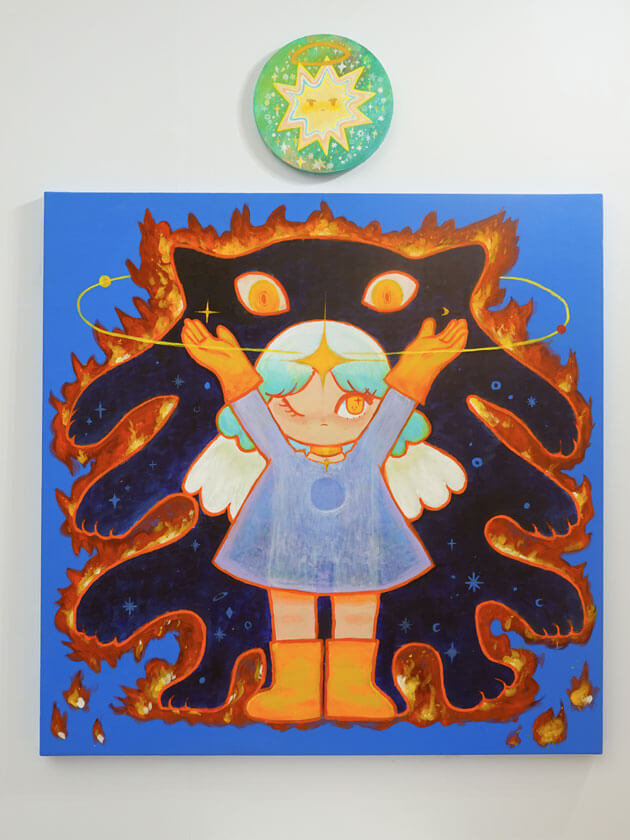
— Do you feel any differences in art and music between China, where you were born, and Japan, where you are based?
Beijing, where I was born, has a long history, and perhaps because of that, there’s a strong culture of "digging deep." Traditional elements are deeply rooted, and while there is exposure to international art and music, they don’t easily become mainstream.
On the other hand, in Tokyo, I feel like I’m constantly being swept up in an overwhelming flood of information. And it’s not just Japanese culture—things from all over the world converge here, making it feel like a cultural hub.
Simply put, Beijing feels like it "digs vertically," while Tokyo "spreads horizontally." I find that contrast really fascinating.
— Do you have any favorite spots for creative inspiration?
I spend most of my time creating in my studio, but if I go out for inspiration, I love the secondhand bookstores in Jinbocho! It’s so much fun uncovering past cultures and art, and every time I visit, I find myself thinking, "Wait, this existed?!"
You can find the latest information easily online, but discovering insane, forgotten works from the past requires actually walking around and searching for them. That’s what makes it exciting—like a real-life treasure hunt for inspiration!
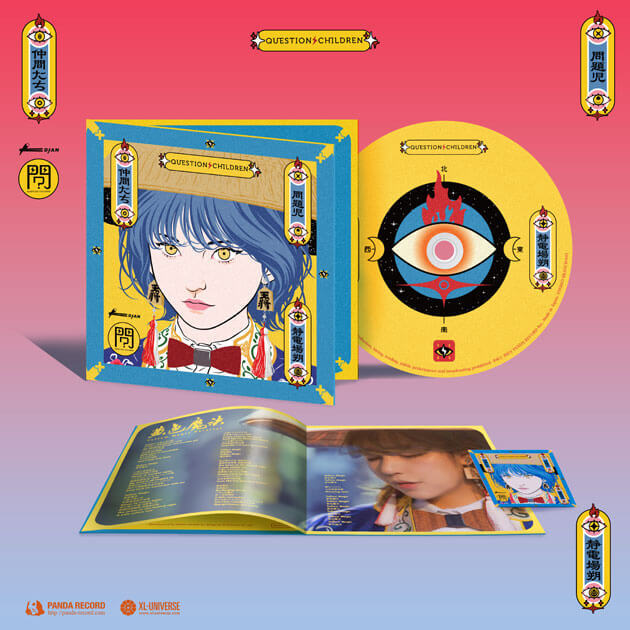
— What is the most important thing you value in your creative work?
The thing I value most is whether I am truly expressing 100% of myself.
In this era, we’re constantly bombarded with information and noise—like radios receiving endless signals. Ideas like "This is what's considered good" or "This is what will be popular" can easily pull us into a larger aesthetic system without us even realizing it. Sometimes I catch myself thinking, "Wait… why did I start liking this in the first place?" —almost as if I’ve been unknowingly brainwashed.
In this chaotic world—like a bubbling hot pot full of mixed flavors—I think one of the biggest challenges is holding onto your own unique taste, whether it's delicious or not.
— Are there any new challenges you’d like to take on in the future?
A big new challenge for me is mysolo exhibition at Daikanyama Tsutaya Books this May! This will be my second time exhibiting there. Last time, I combined traditional painting with neon elements, but this time, I’m taking it to the next level by incorporating game-like storytelling into the artwork. I want to create a new kind of experience that makes both me and the viewers go, "Whoa!?"
Also, this year I’ll be performing live shows in both Japan and China, and I’m planning to release my first-ever Chinese-language album! I’m really excited to see how it all comes together—so stay tuned!
Profile:
Saku Seidenba (Diàn)
Born in Beijing, China, Diàn is a pop artist, singer, art director, and fashion designer.
After graduating with a major in animation from Communication University of China, the country’s top institution for broadcasting and media, Diàn moved to Tokyo in 2012. They later earned a degree in Digital Content from Digital Hollywood University Graduate School.
With a unique artistic sensibility, Diàn has been immersed in painting, music, and other art forms since childhood. Since 2018, they have held solo exhibitions in Tokyo, Shanghai, and Beijing, expanding their original characters internationally. Their distinctive style has also made them a fashion icon, leading to a modeling career alongside their creative work.
In 2017, Diàn founded the music unit "Question Children", and in 2018, they made their Japanese music debut with "Yellow Magic Carnival", a cover of Tin Pan Alley's song written by Haruomi Hosono.
As a character creator, musician, model, and pop artist, Diàn continues to thrive across Asia, engaging in diverse creative fields.
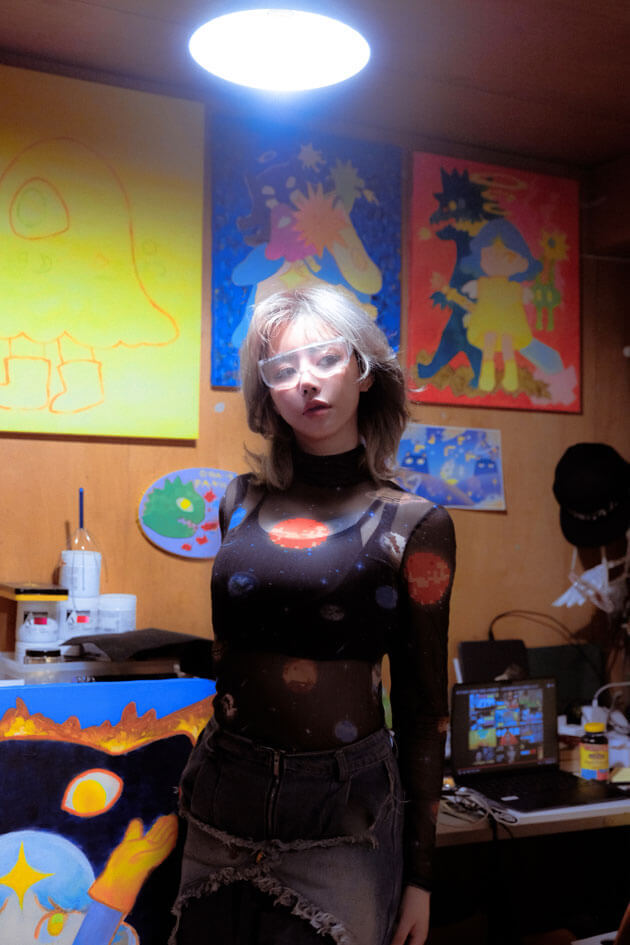
Links
Instagram:https://www.instagram.com/diansaku/
YouTube: https://www.youtube.com/@dian-official
Editor: AWRD Editorial Team
